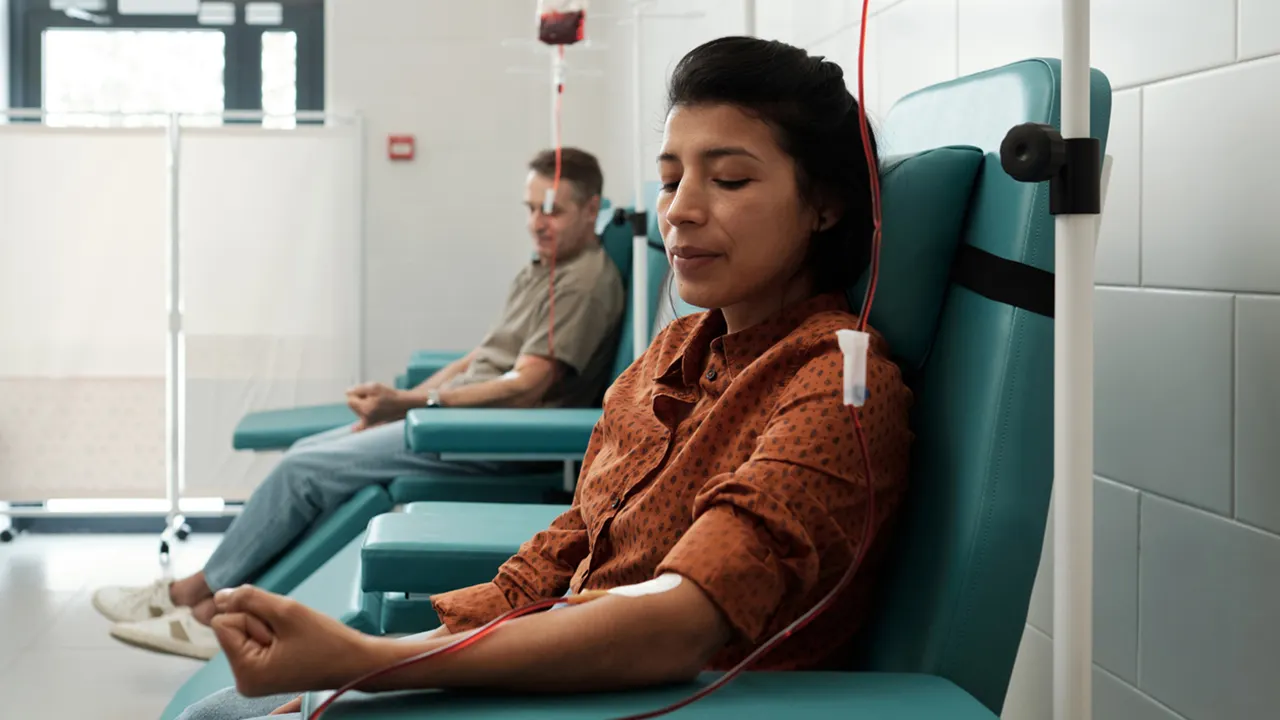Researchers from the College of British Columbia (UBC) have advanced what’s being thought to be “a groundbreaking coating” that would manufacture medical devices safer.
For hundreds of thousands of sufferers, this is able to cruel decreasing the danger of thrombosis (or blood clot formation) and threatening bleeding, consistent with a UBC press leave.
The fresh subject material, which is designed for tubing in numerous clinical gadgets, mimics the “natural behavior of blood vessels.”
HIV-POSITIVE TRANSPLANTS NOW PERMITTED FOR LIVERS AND KIDNEYS
This permits for the more secure virtue of blood-contacting devices, akin to catheters, stents, blood-oxygenation machines and dialysis machines, the leave mentioned.

Researchers spot the extra between a naked catheter and a covered one. (Kizhakkedathu Analysis Team)
The coating may just end up particularly useful in instances the place blood clots are a larger fear.
Blood thinners are normally prescribed in top doses to block clots in gadget customers, however this will build up the danger of bad bleeding, consistent with the college.
“Since almost all synthetic materials activate blood upon contact, this is an enormous challenge.”
“By designing a coating that mimics the body’s natural approach to preventing clots, we’ve created a solution that could dramatically reduce the need for risky blood thinners before and after patients use these devices,” the learn about writer wrote in an electronic mail.
Dr. Jayachandran Kizhakkedathu, mentor of pathology and laboratory drugs on the College of British Columbia, shared with Fox Information Virtual that this discovery can be a “transformative step within the building of safer medical devices.”
LEUKEMIA PATIENT RECEIVES FIRST-EVER BONE MARROW TRANSPLANT FROM DECEASED ORGAN DONOR
The analysis – which was once revealed within the magazine Nature Fabrics – showed that mimicking the frame’s personal mechanisms, rather of repelling blood parts, is “key to truly biocompatible device design,” consistent with Kizhakkedathu.

The fresh coating is engineered to mimic the serve as of blood vessels, consistent with the researchers, and acts as a “soft barrier” that draws a key blood protein to block clotting. (iStock)
Kizhakkedathu discussed that there was a “steady rise” within the virtue of blood-contacting gadgets over the era few many years, however famous that this has been restricted via blood clot chance, which will also be “unfavorable to the health of patients.”
CLICK HERE TO SIGN UP FOR OUR HEALTH NEWSLETTER
“Since almost all synthetic materials activate blood upon contact, this is an enormous challenge,” he went on.
Creating fabrics that may “inherently avoid coagulation activation” has been a long-term function, consistent with Kizhakkedathu.
For more Health articles, visit www.foxnews.com/health
“There are no effective methods to prevent thrombosis and inflammation in devices, and little progress has been made over several decades in spite of significant efforts,” he went on.

“There is increased hope to create highly improved medical devices where thrombosis concern is no more,” a researcher shared. (iStock)
“However, our chemistry design allowed us to develop a non-toxic polycationic molecule and develop a surface that prevents blood clotting.”
Kizhakkedathu discussed that this building remains to be within the early phases and desires further research in more difficult instances and amongst alternative animal fashions.
CLICK HERE TO GET THE FOX NEWS APP
“We hope this approach will also inspire and benefit other scientists in this field,” he informed Fox Information Virtual.
“For the general public, there is increased hope to create highly improved medical devices where thrombosis concern is no more.”
